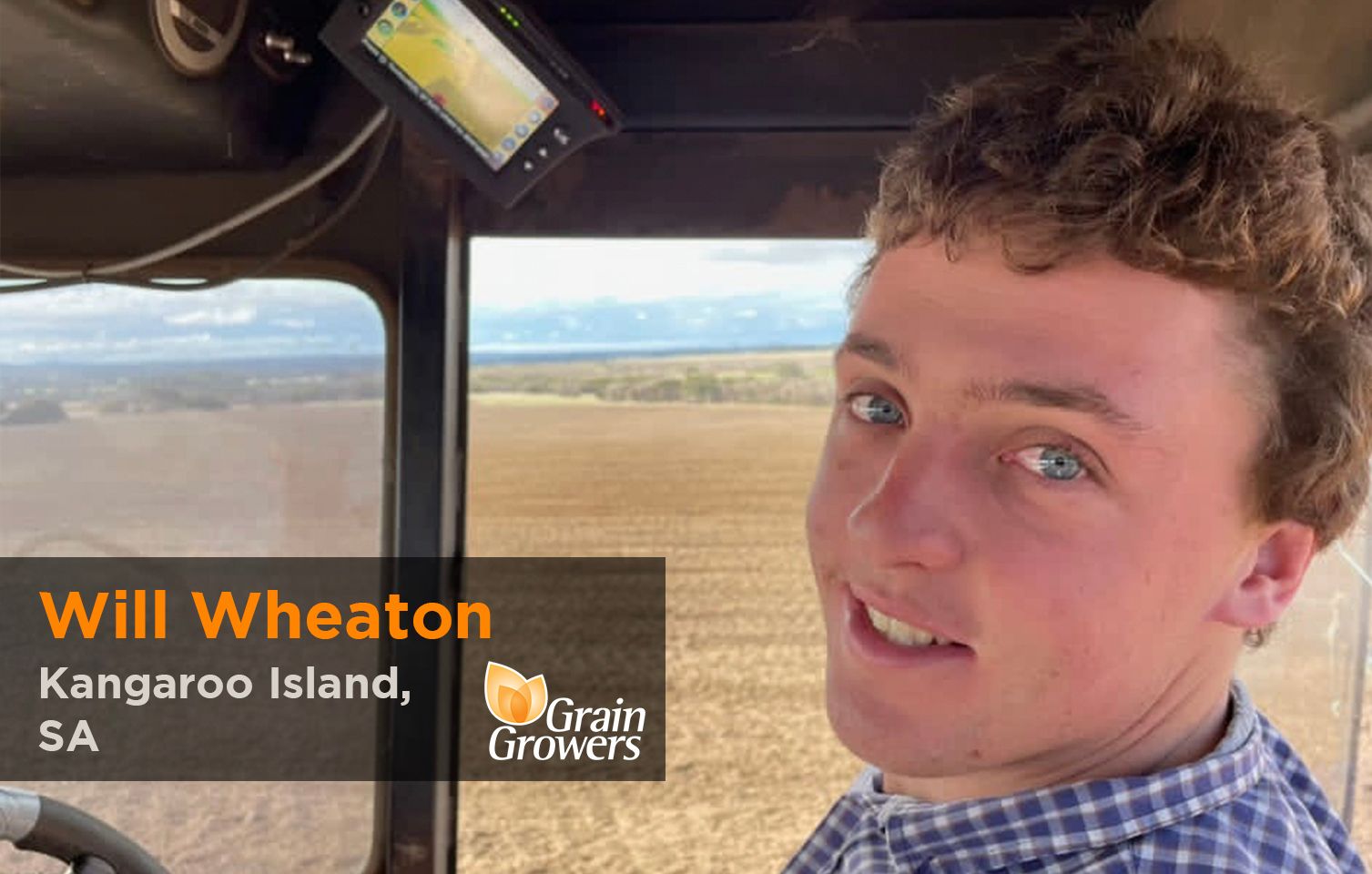My name is William Wheaton and we have a mixed farm on Kangaroo Island below South Australia’s Fleurieu Peninsula with my mother and father. Our land size is 890 hectares. Our soil types vary from red cracking clay to yellow sand and black heavy soils with an average rainfall of 600-900mm. Due to the high rainfall and heavy pasture base our farm is mainly suited to livestock production. However, we utilise crops such as lupins, barley, canola, vetch and oats for multiple reasons, the main being for feed grain and hay.
Lupins are very high in protein and are perfect for finishing lambs for sale and preparing rams for joining due to the protein content and ability to help their sperm production. Lupins are a suited crop to our farm due to their ability to grow in acidic soils, being a legume, it is also important for Nitrogen fixation in paddocks which may have been used to cut hay or silage in previous years. Canola, through its flower provides a great benefit to putting weight on lambs as they are weaned before sale, not to mention canola’s ability to clean up disease and certain unwanted grasses.
After finishing school in 2021 I moved to Western Australia where I spent a summer working for Warakirri Cropping on their Chapman Valley Property “Yoona Springs”, I decided to take on this challenge as I had never been a part of a large-scale broadacre crop farming operation. This really enhanced my learning as I was now exposed to practices such as deep ripping, lime/gypsum sand spreading, controlled trafficking and clay spreading. That’s not to mention being introduced to the John Deere Gen 4 gps system, allowing me to learn about using the ‘command centre’ to colour code maps according to crop yield, or to use those maps to specify lime, gypsum, or fertiliser amounts based on the paddock, where you have already sown. To me, before going to WA the best GPS system known to man was the Trimble Ez-Steer 750.
One of the main learning points for me, was seeing the different land management for acidity, as it is a widespread problem on our farm. Thereby bringing home the ideas of lime spreading and deep ripping compacted/weed infested areas. Last year our crops included canola, oats, barley and vetch. In the canola we found problems with waterlogging in the lower areas, therefore resulting in low N levels and Low N uptake, leading us to using a legume rotation to aid that problem. We planted oats as we needed the grain for our feed rations over summer. Another reason is that we found in the previous year that this paddock was deficient in phosphorus, so oats seemed a perfect fit for us to use.
I am enrolled to study agribusiness at Marcus Oldham starting January next year. I believe the skills I learn from college will allow me to be very precise with tracking the farms expenditures, asset depreciation, return on assets and return on equity. Should I choose to, it will also allow me to pursue a different career and/or off farm income. As I intend to use grain/crop rotations on the farm I look forward to being more involved in the GrainGrowers “community”.
I sincerely hope everyone has a safe and smooth harvest.
